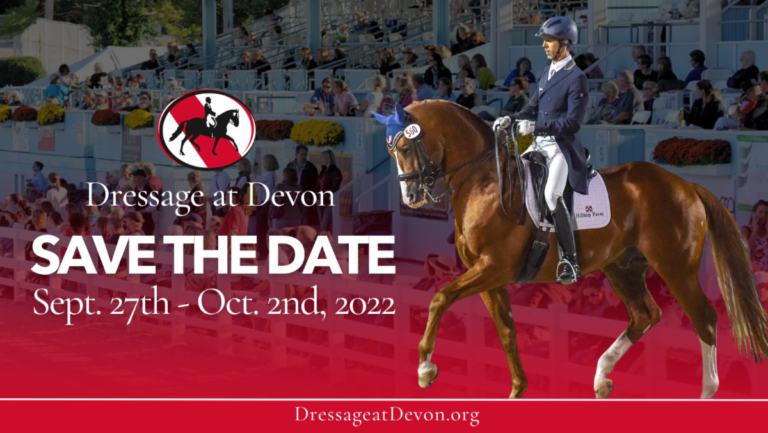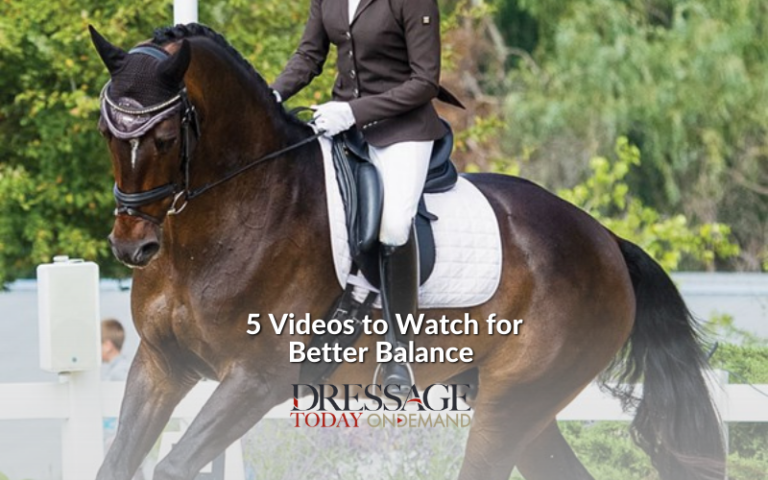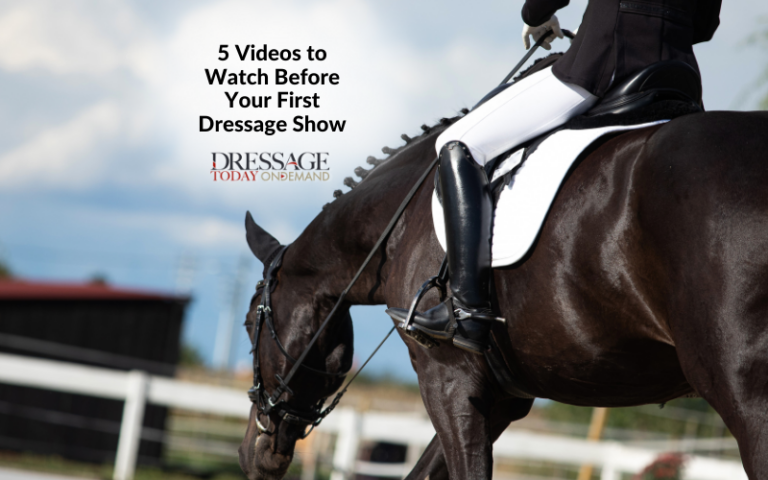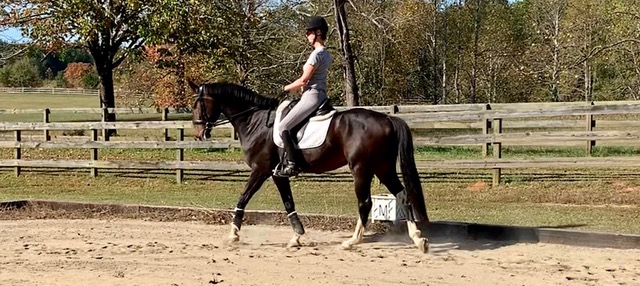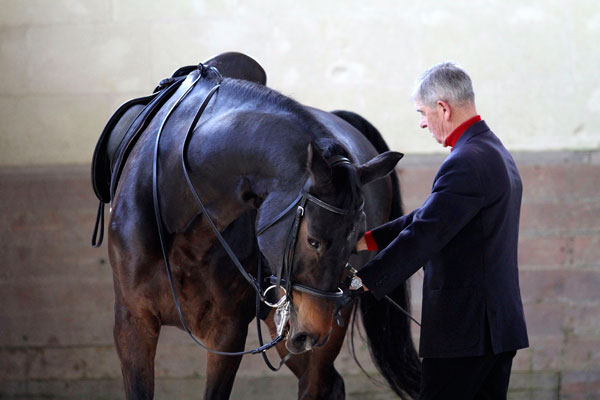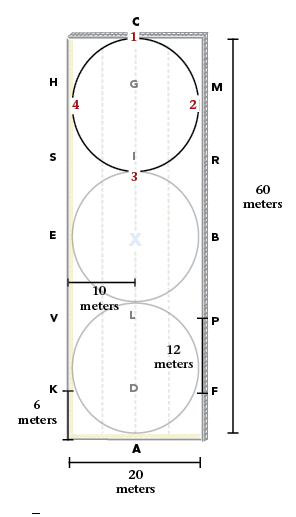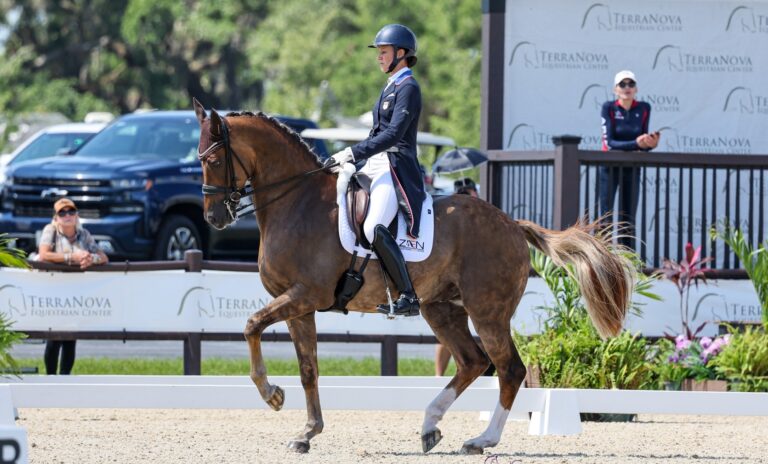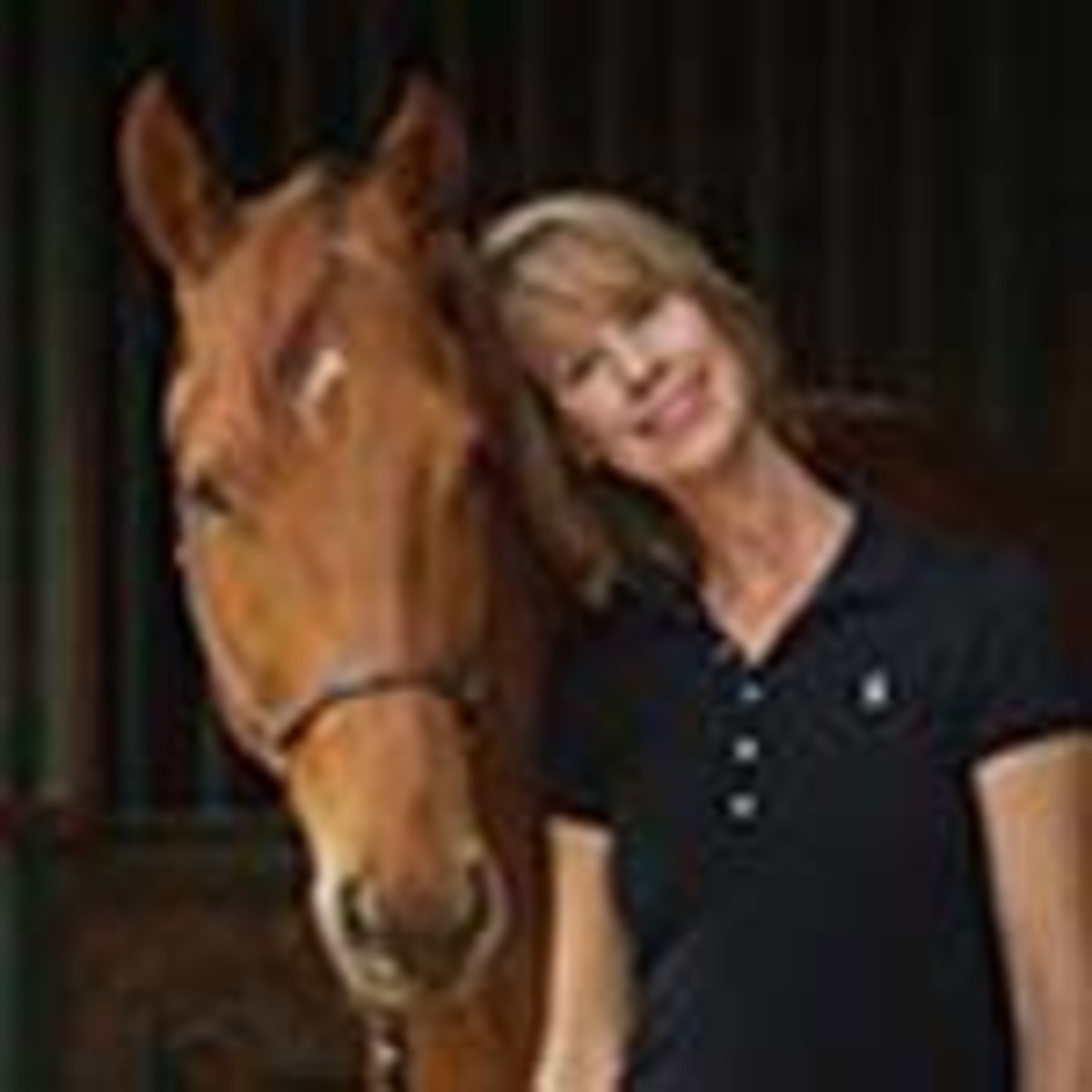
The athleticism of this horse never fails to astonish me.
Being called in from the field with nothing more than a lowly carrot, Forrest, who, a few moments before, had been happily trotting down the fence line alongside his babysitter, Fozzy, in the adjoining pasture, when, taking note there was food involved with my request, peeled away in a 180 and hurtled, top speed, toward me. I stood, rooted, trusting in his greed and God. Within three strides, Forrest dropped his hindquarters, pulled up from a gallop to a pivot and a halt no more than a couple of feet from my outstretched hand, laser locked on the trembling vegetable before him.
While he continues his “let down” and hoof growth, I have continued his kindergarten lessons of jaw flexions and stretching exercises. And with the blissfully warm stretch of intoxicating spring weather we’re experiencing, it has seemed like a good time to introduce him to the mounting block.
As I’ve mentioned in a previous post, it’s important to remember that OTTBs will look at a mounting block for the first time the same way as you and I peer at the latest version of Microsoft’s Windows 8:
“What you talkin’ ’bout, Willis?”
We just have no idea what it’s about or what we’re supposed to do with them.
Racehorses aren’t led to a mounting block while the jockey scrambles aboard. No, the horse is being led, and, while walking, the jockey is “jumped up,” into the saddle. So, as far as Forrest is concerned, no one has ever asked him to stand quietly while a human steps into the stirrup iron, and he certainly hasn’t seen a mounting block.
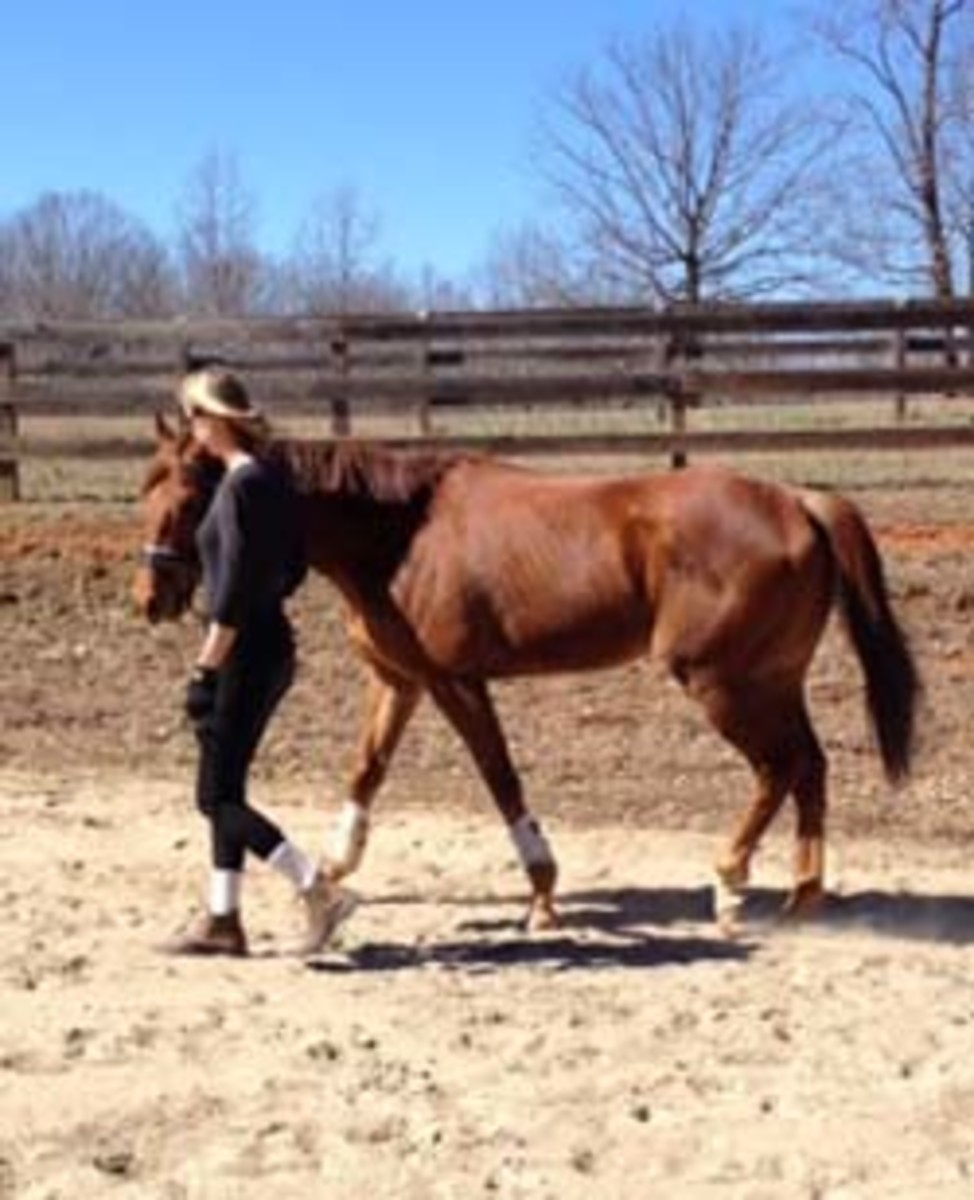
It seemed a logical idea to simply lead him around my arena, first, to get used to the sights and sounds (bird chirping, squirrels chattering, neighbor shooting at God knows what) of that area.
When it was clear that Forrest was nonplussed, I led him, in his bridle, to the mounting block. I sat for a bit, fed him an occasional cookie from my pocket and then, standing, refreshed his memory regarding the bit flexions, which was successful in getting him to chew and swallow and relax.
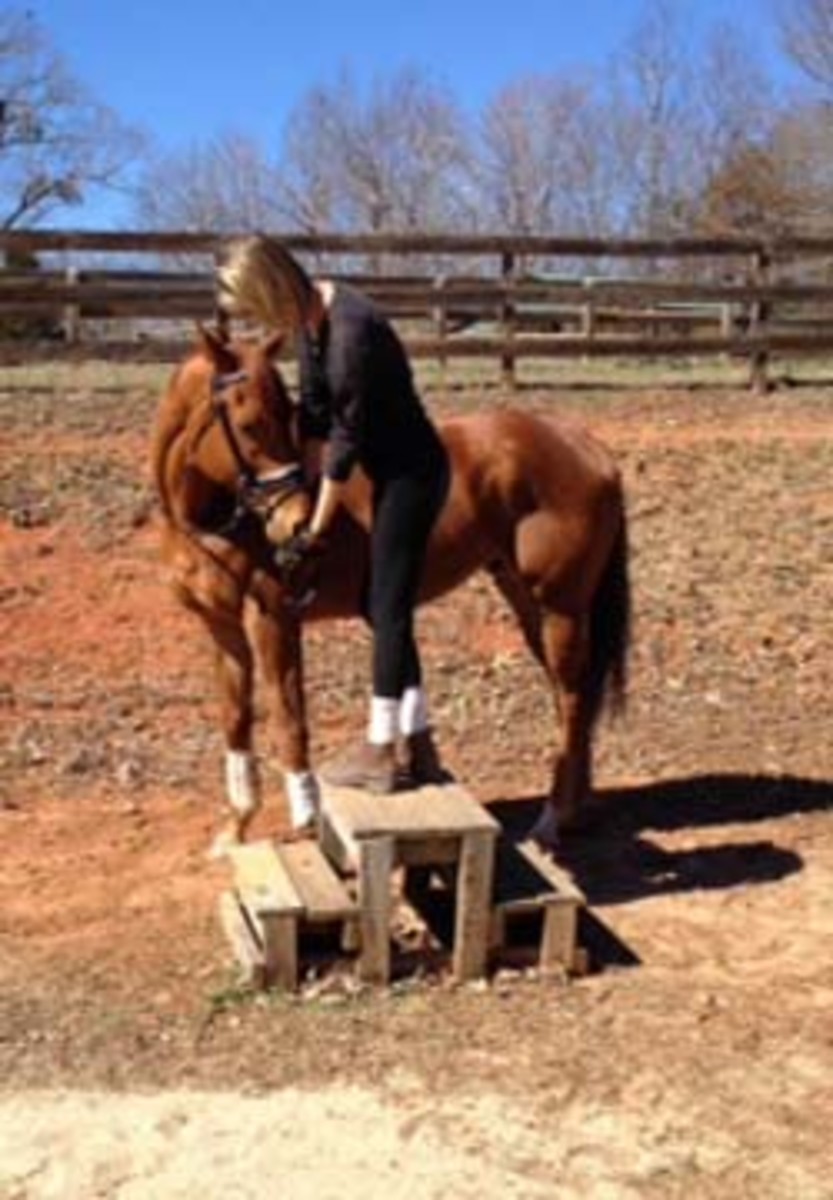
However, the first time I stood, he shuttled away from me—not unexpected. Because we had been practicing yielding from pressure in the barn over the snow days (saying, “Oo-ver” upon pressing my finger in his ribs on both sides), I was able to hop down and just touch him to line him back flush with the block. I had to repeat this a few times, making sure to praise lavishly each time he stood.
One must remember that it’s unnerving for a young horse to have a human, or anything, at a height higher than they are—it goes back to predatory fears: I could be a lion or a tiger or anything else with a 36” inseam and white gym socks. However, by continuing to speak in low tones and encourage him to stretch around and meet my offered cookie on both sides of his body, he began to relax and trust.
And when I felt that he was as loose and unguarded as an old trail horse, I began to lean my weight, gently, across his back, rewarding him each time he tolerated it for several seconds before wanting to move away.
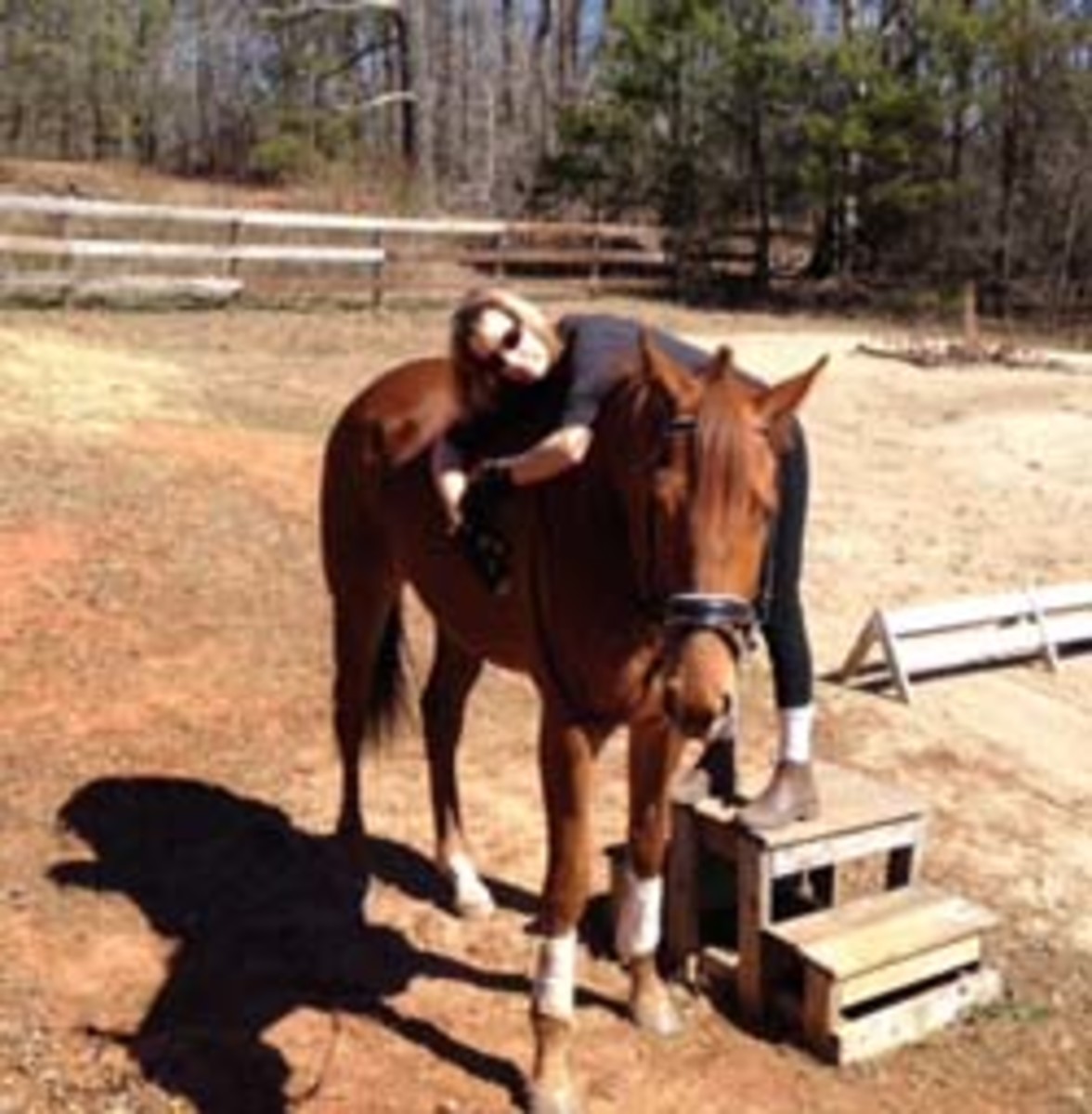
Baby steps…it’s all about the baby steps.


